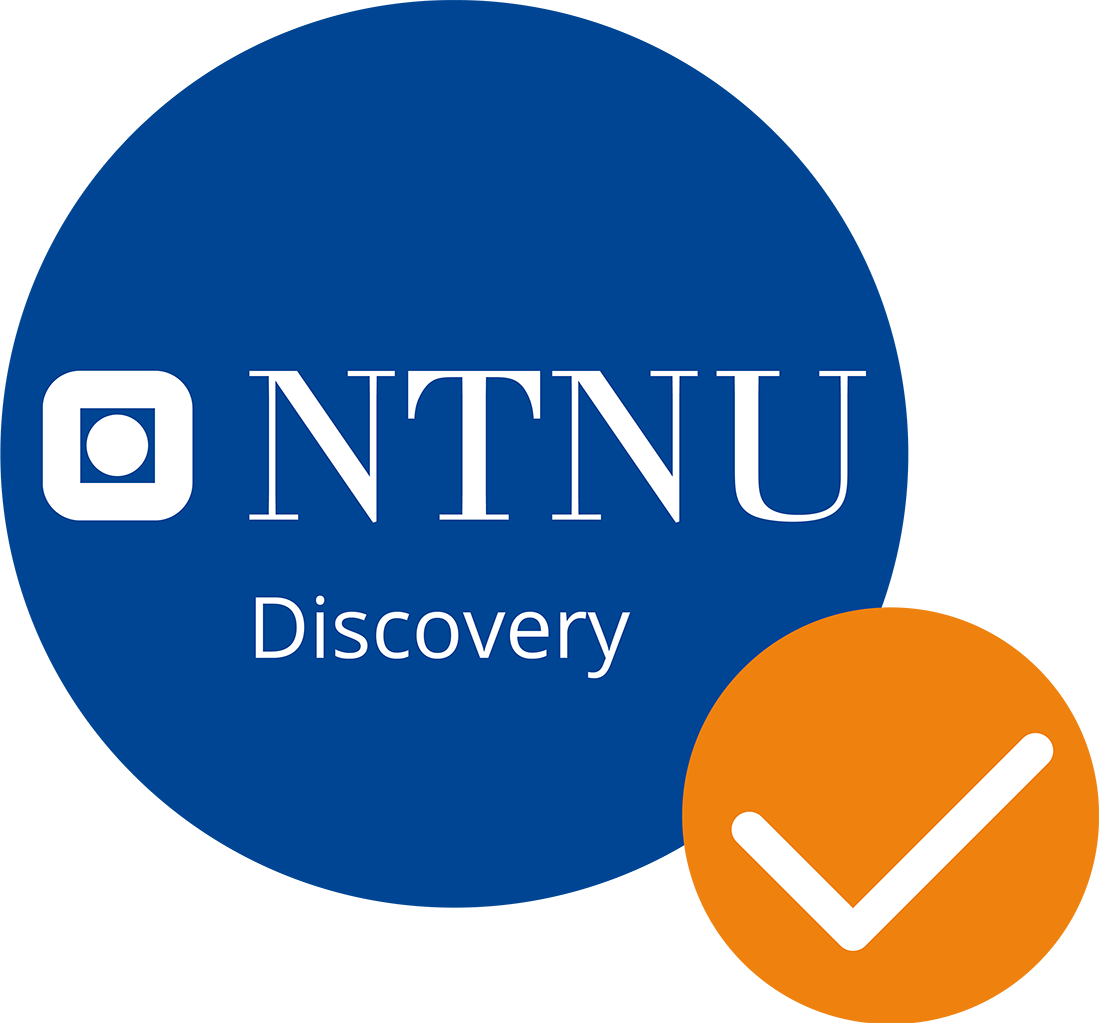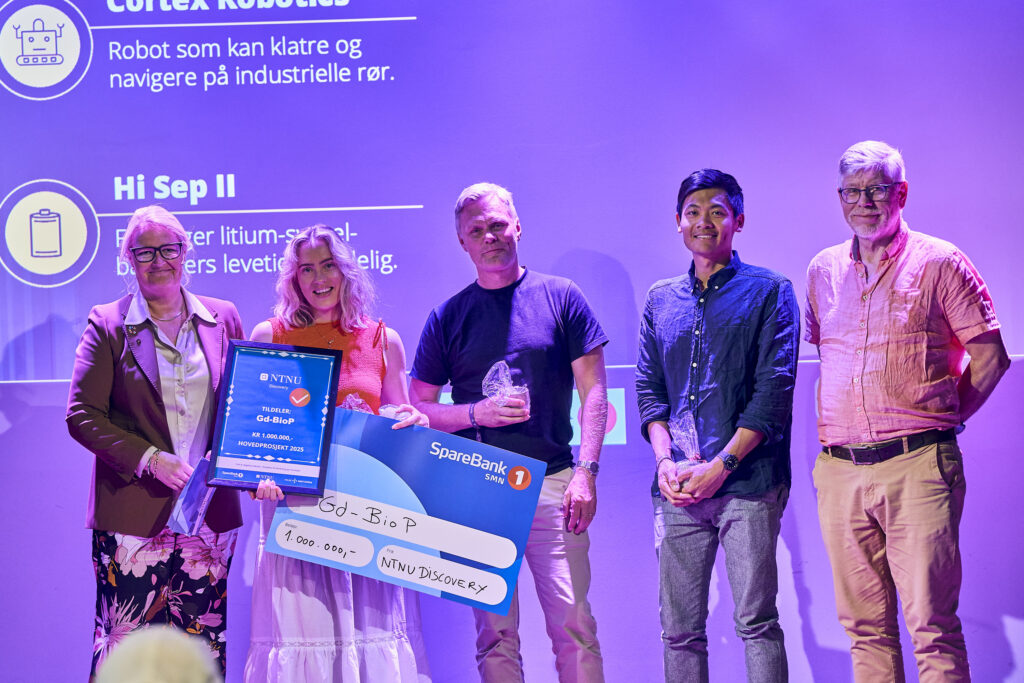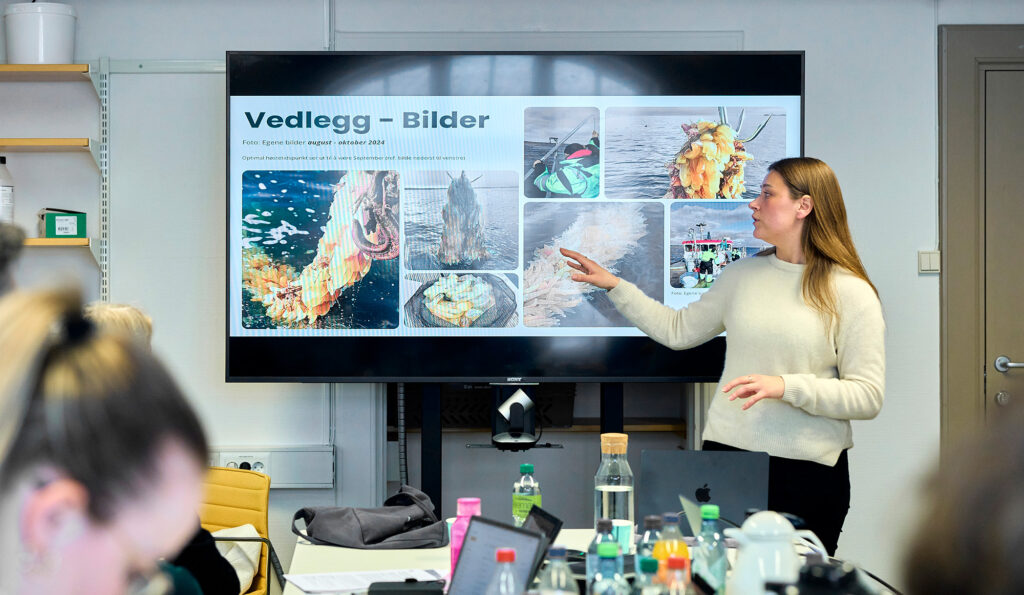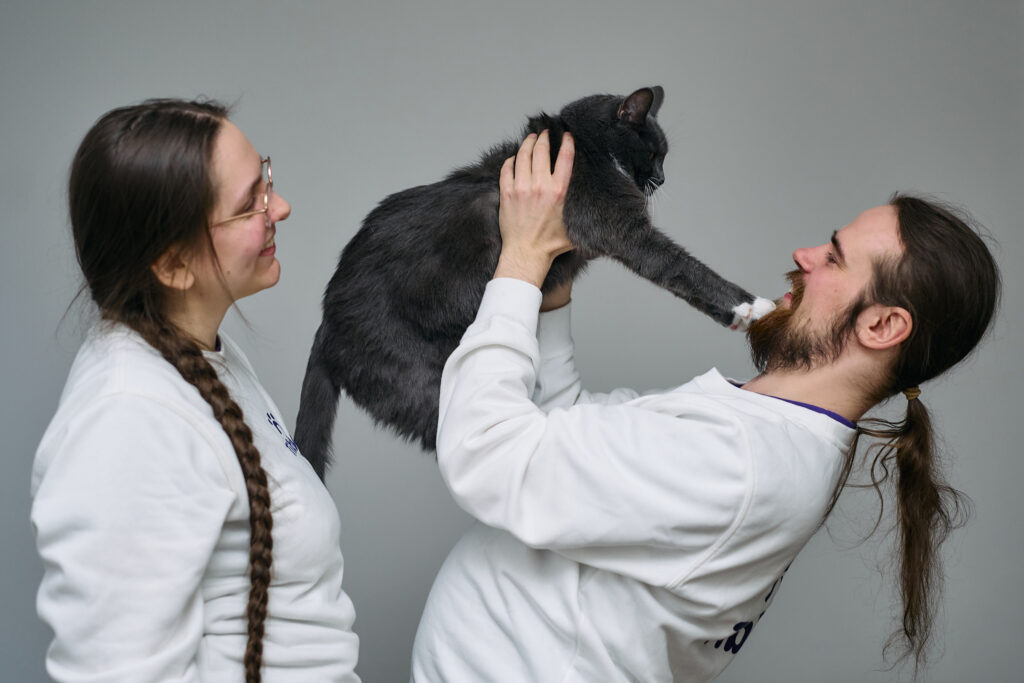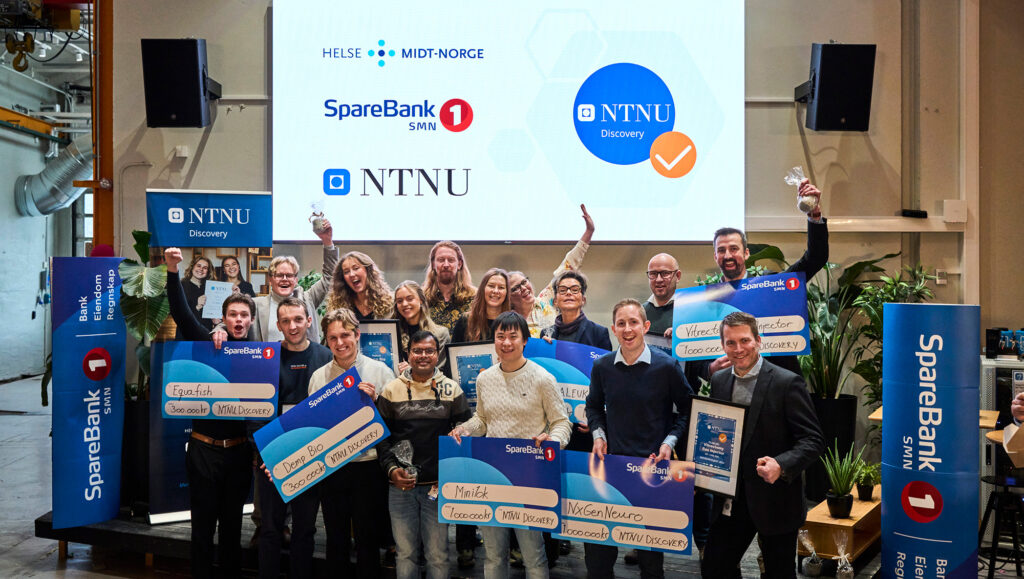“Practising” themselves free of migraines with an app
Tekst: Anne-Lise Aakervik
Foto: synlig.no
Children and youths suffering from migraines currently have very limited treatment options. Soon, a non-pharmaceutical treatment, so far only offered in hospitals, may become available at home in their own rooms.
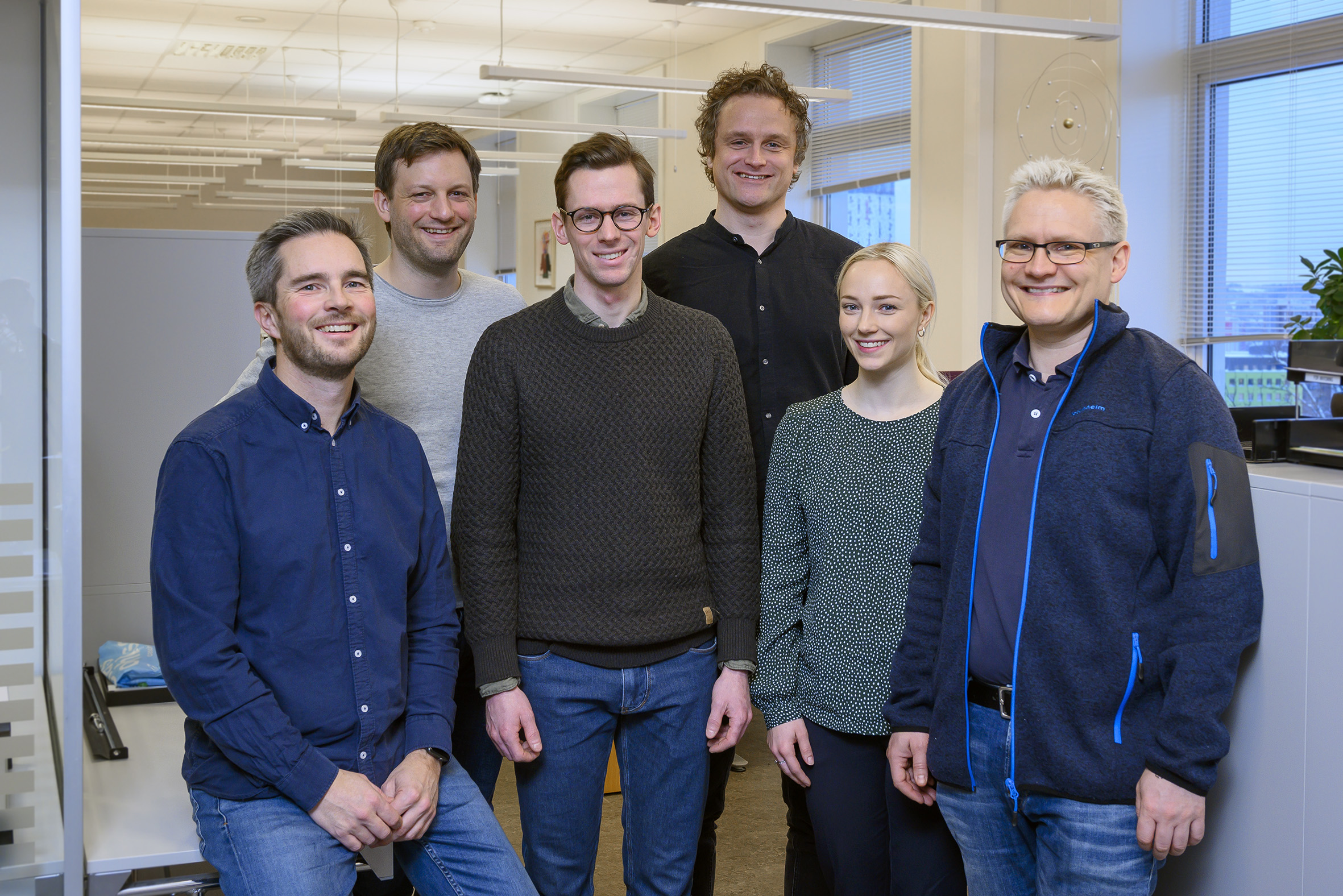
Biofeedback is a type of therapy where the patient is performing specific exercises while their heart rate, muscle tension and body temperature are measured and displayed on a monitor. With this method, the patient can learn to better control the tension in their bodies. This therapy is available in hospitals all over the world. It requires expensive, stationary equipment and a trained therapist, which means the therapy is only available to a small percentage of patients suffering from migraines.
The goal of the research team behind MI-Insight is to make this therapy more widely available by moving it out of a clinical setting and into homes and away from the therapist to the users themselves. Large computers and stationary equipment are replaced with an app that downloads to the user’s smartphone and connects to wireless, portable sensors. The treatment is aimed at children and youths with migraine, who currently have very few treatment options.
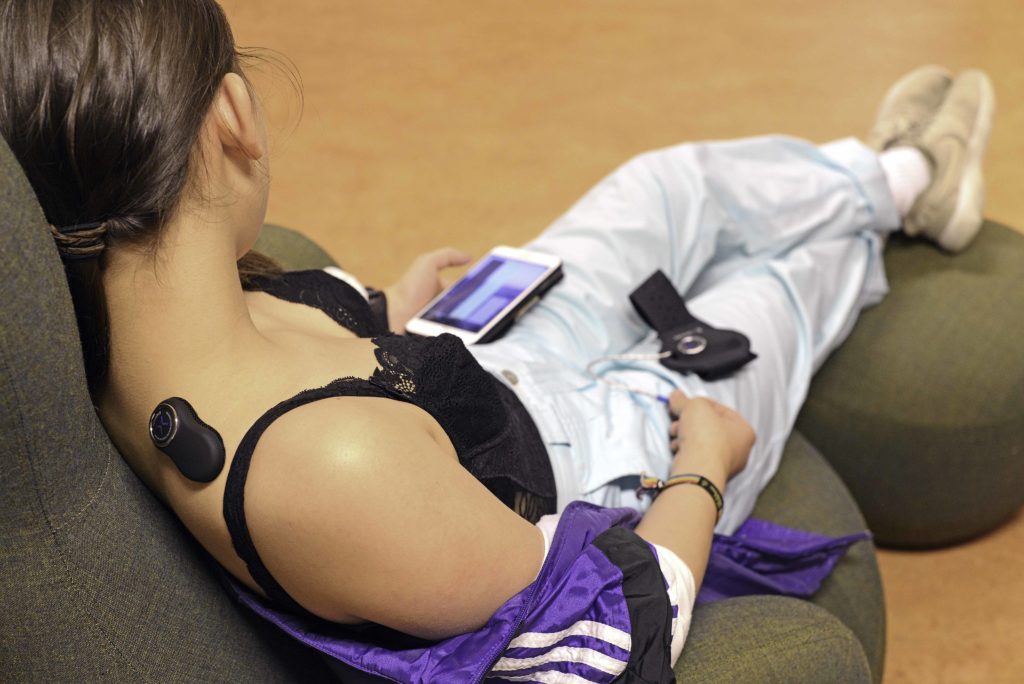 Utstyr som kan benyttes hjemme gjør at flere unge kan bruke denne teknologien til å mestre migrene uten medisinsk behandling. Foto: MI-Insight
Utstyr som kan benyttes hjemme gjør at flere unge kan bruke denne teknologien til å mestre migrene uten medisinsk behandling. Foto: MI-Insight
“We believe better availability and the fact that you can do it at home or anywhere, really, will give more patients the opportunity to try it out. Our hope, of course, is that the outcome will be fewer and less intense migraines for this group of young people,” says Anker Stubberud, student and inventor, currently studying at NTNU’s Department of Neuromedicine and Movement Science.
Increasing awareness
“By implementing biofeedback, you can “practice” regulating your body’s signals before a migraine attack is triggered. In simple terms, you become more aware of how your body reacts and better able to recognize your own symptoms,” Alexander Olsen explains. He is one of the inventors and the project’s supervising psychologist, affiliated with the Department of Psychology.
Senior consultant and headache expert Dr. Erling Tronvik at St. Olavs Hospital is the project’s medical supervisor. “We know that up to 1/3 of all children and youths experience migraine attacks. Studies show that approx. 150,000 children and youths under the age of 18 suffer from migraines. The disease is quite common. We also know from studies that approx. 71 % of patients cite stress as their number one trigger for migraine attacks.”
Doctors are restrictive in prescribing medication for young migraine patients, and among the few who do get medication, the effects vary considerably.
From few to many
Biofeedback has so far been an expensive treatment, in the sense that you have to travel to a hospital or clinic to get it, and you need professionals to actually perform the treatment. With a mobile app, it will be possible for patients to perform this treatment anywhere, with no health personnel present.
And we know that biofeedback works well—studies have proven the treatment’s efficacy. The treatment prevents migraines and research shows that sufferers experience, on average, two fewer attacks per month.
Simple and self-explanatory
The most important factor for the team, aside from efficacy, is user-friendliness. The main challenge for developers has been to make the app self-explanatory and to have it work as it should every time. The user has to attach sensors that measure heart rate, body temperature and muscle tension.
“The app must be user-friendly and effective, so that the kids are happy to use it,” Stubberud says.
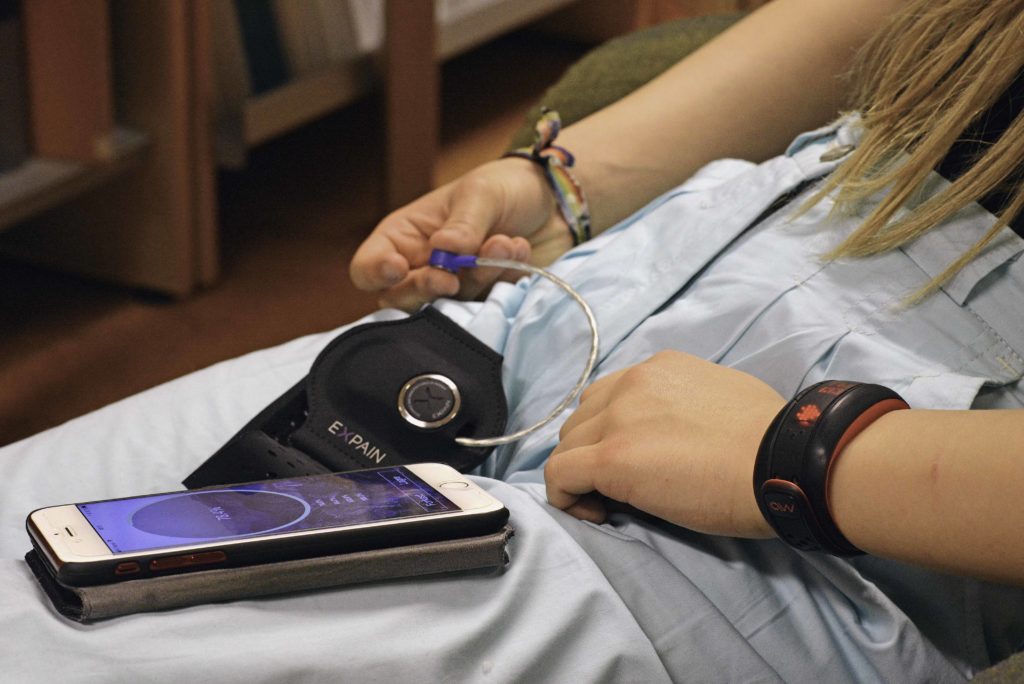 Sensorer festes på kroppen og er knyttet til mobiltelefonen. I første omgang er det lagt opp til 10 minutters behandlingstid hver dag. Foto: MI-Insight
Sensorer festes på kroppen og er knyttet til mobiltelefonen. I første omgang er det lagt opp til 10 minutters behandlingstid hver dag. Foto: MI-Insight
Another challenge in terms of use is to keep users invested over time. “That’s why we are recommending 10 minutes of daily therapy, and we have included unique rewards in the feedback the app gives.”
Study to prove effect
In order to complete a market-ready version of their product, the team is working with Jørgen Nordahl from NTNU Technology Transfer and have applied for funding from NTNU Discovery. They also plan to carry out a research study on children and youths through 2019.
The research team recently completed a small pilot study with youths who suffer from migraines. They studied the user-friendliness of MI-Insight and plan to measure the efficacy of the treatment by looking at the frequency of attacks before and after the study. The goal for the main study is to prove a positive effect on approx. 40 patients. Tests show no difference between whether the patient is using MI-Insight or the stationary biofeedback system at St. Olavs Hospital.
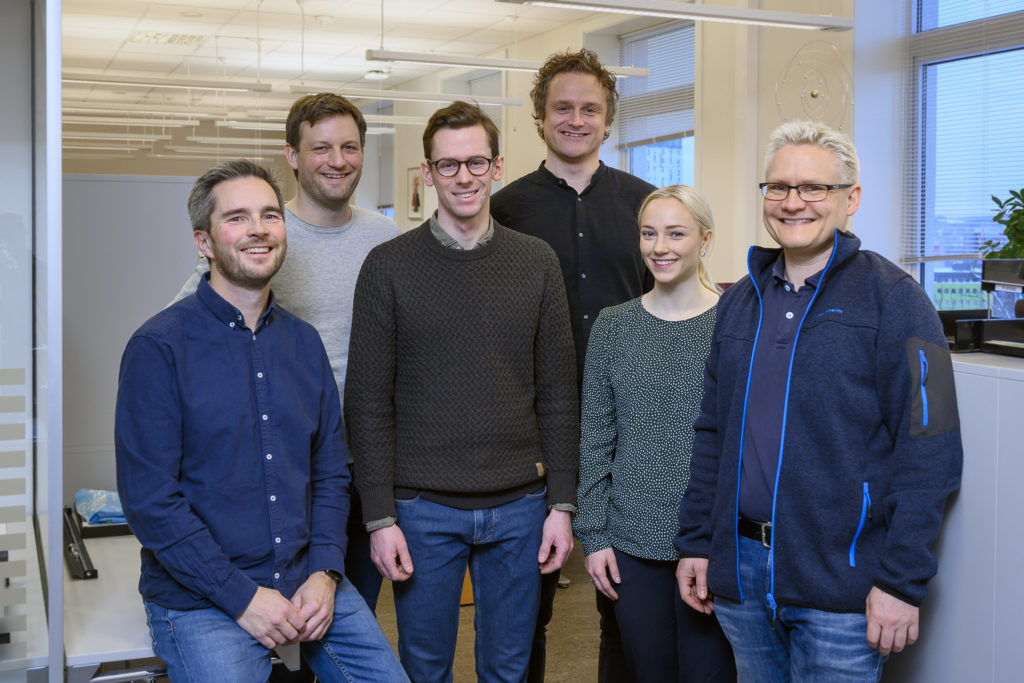 Jørgen Nordahl, Vetle Engesbak, Anker Stubberud, Alexander Olsen, Cathrine Ro Heuch og Erling Tronvik
Jørgen Nordahl, Vetle Engesbak, Anker Stubberud, Alexander Olsen, Cathrine Ro Heuch og Erling Tronvik
Take control of tension
Migraines cannot be compared to tension headaches, which are something most of us experience at some point in our lives. Migraines are debilitating for adults and children alike. Migraines cause throbbing or pulsing pain and patients become sensitive to both sounds and light. For children, something as simple as looking forward to something or dreading something can be enough to trigger it. Both positive and negative stress manifests in changes in our autonomous nervous system, and these changes are accompanied by changes in heart rate, body temperature and muscle tension.
“And these are exactly the type of body signals we want migraine sufferers to know about and recognize. They can then practice regulating these signals, in the hope of reducing both the frequency and the duration of migraine attacks,” Alexander Olsen says.
“After a successful project phase, MI-Insight will be made available to patients, and the first user group will be children and youths with migraine,” Jørgen Nordahl says.
Prosjekter og nyheter
Kontakt:
Håvard Wibe
Epost: havard.wibe@ntnu.no
Telefon: 41 47 37 68
Kontor: Hovedbygget, sokkel , rom 009
Personvernerklæring
Brosjyrer og årsrapporter:
